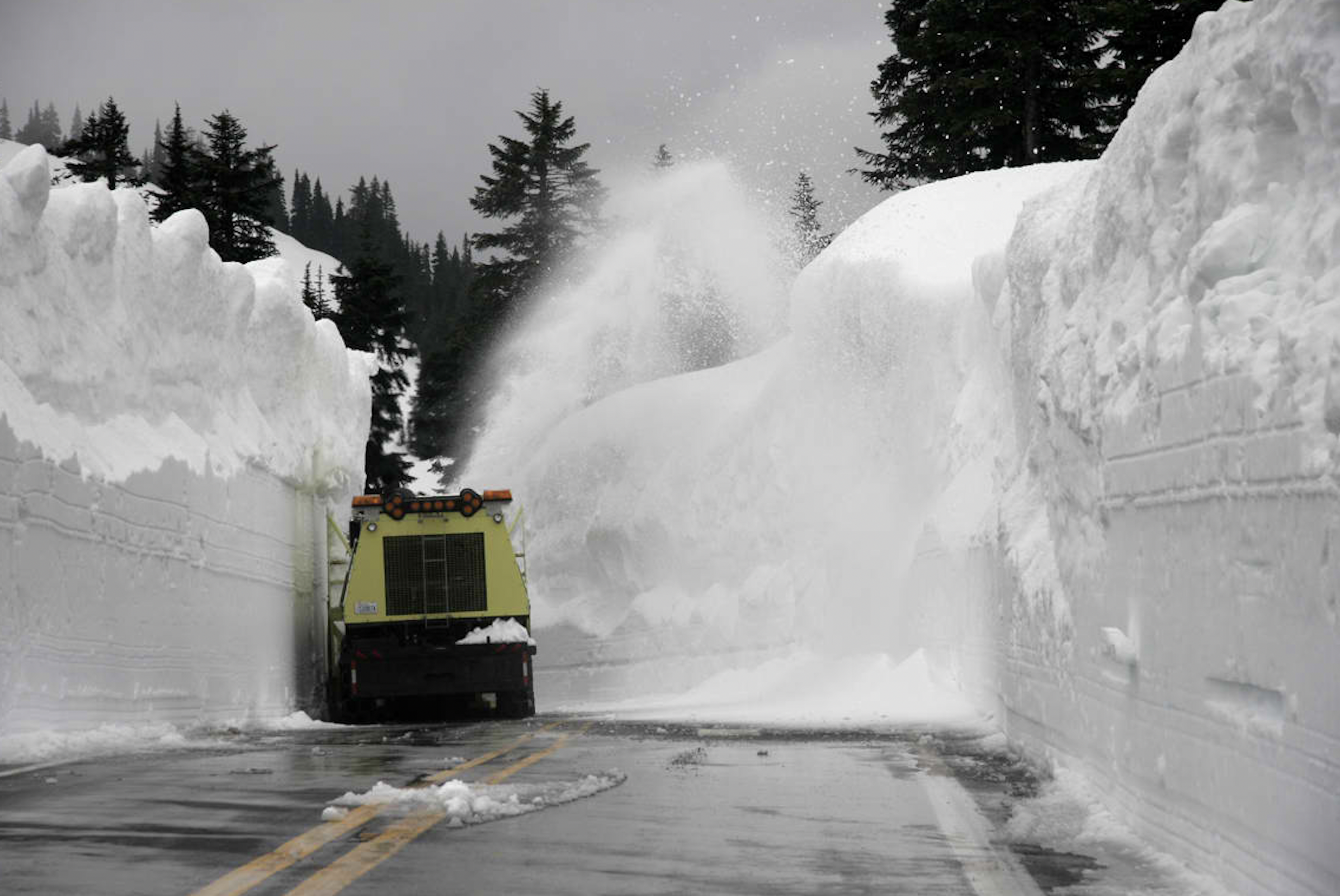SKIING HISTORY
Editor Seth Masia
Managing Editor Greg Ditrinco
Consulting Editor Cindy Hirschfeld
Art Director Edna Baker
Editorial Board
Seth Masia, Chairman
John Allen, Andy Bigford, John Caldwell, Jeremy Davis, Kirby Gilbert, Paul Hooge, Jeff Leich, Ron LeMaster, Bob Soden, Ingrid Wicken
Founding Editors
Morten Lund, Glenn Parkinson
To preserve skiing history and to increase awareness of the sport’s heritage
ISHA Founder
Mason Beekley, 1927–2001
ISHA Board of Directors
Rick Moulton, Chairman
Seth Masia, President
Wini Jones, Vice President
Jeff Blumenfeld, Vice President
John McMurtry, Vice President
Bob Soden (Canada), Treasurer
Einar Sunde, Secretary
Richard Allen, Skip Beitzel, Michael Calderone, Dick Cutler, Ken Hugessen (Canada), David Ingemie, Joe Jay Jalbert, Henri Rivers, Charles Sanders, Christof Thöny (Austria), Ivan Wagner (Switzerland)
Presidential Circle
Christin Cooper, Billy Kidd, Jean-Claude Killy, Bode Miller, Doug Pfeiffer, Penny Pitou, Nancy Greene Raine
Membership Services
Laurie Glover
(802) 375-1105
laurie@skiinghistory.org
Corporate Sponsorships
Peter Kirkpatrick
(541) 944-3095
peterk10950@gmail.com
Bimonthly journal and official publication of the International Skiing History Association (ISHA)
Partners: U.S. Ski and Snowboard Hall of Fame | Canadian Ski Museum and Hall of Fame
Alf Engen Ski Museum | North American Snowsports Journalists Association | Swiss Academic Ski Club
Skiing History (USPS No. 16-201, ISSN: 23293659) is published bimonthly by the International Skiing History Association, P.O. Box 1064, Manchester Center, VT 05255.
Periodicals postage paid at Manchester Center, VT and at additional mailing offices. Postmaster: Send address changes to ISHA, P.O. Box 1064, Manchester Center, VT 05255
ISHA is a 501(c)(3) public charity. EIN: 06-1347398
Written permission from the editor is required to reproduce, in any manner, the contents of Skiing History, either in full or in part.
Going Deep in North America
Major storms and massive snow years are the stuff of every skier's dreams. And access-road nightmares.
Photo above: Clearing Chinook Pass, elevation 5,430 feet (1,635m), in Mt. Rainier National Park, Washington, in 2011. Photo courtesy Mt. Rainier National Park.
It was President’s Day weekend of 2021 before Alta shook off a snow slump with an active weather pattern that dumped most of the weekend, eased slightly, then entered another cycle. Highway officials closed the road to Snowbird and Alta at midnight for avalanche control work. At Alta, the town marshal ordered an “interlodge,” confining all residents and guests indoors until avalanche work had been completed. That inconvenience is a powder skier’s dream, because it guarantees first tracks when the siege ends.
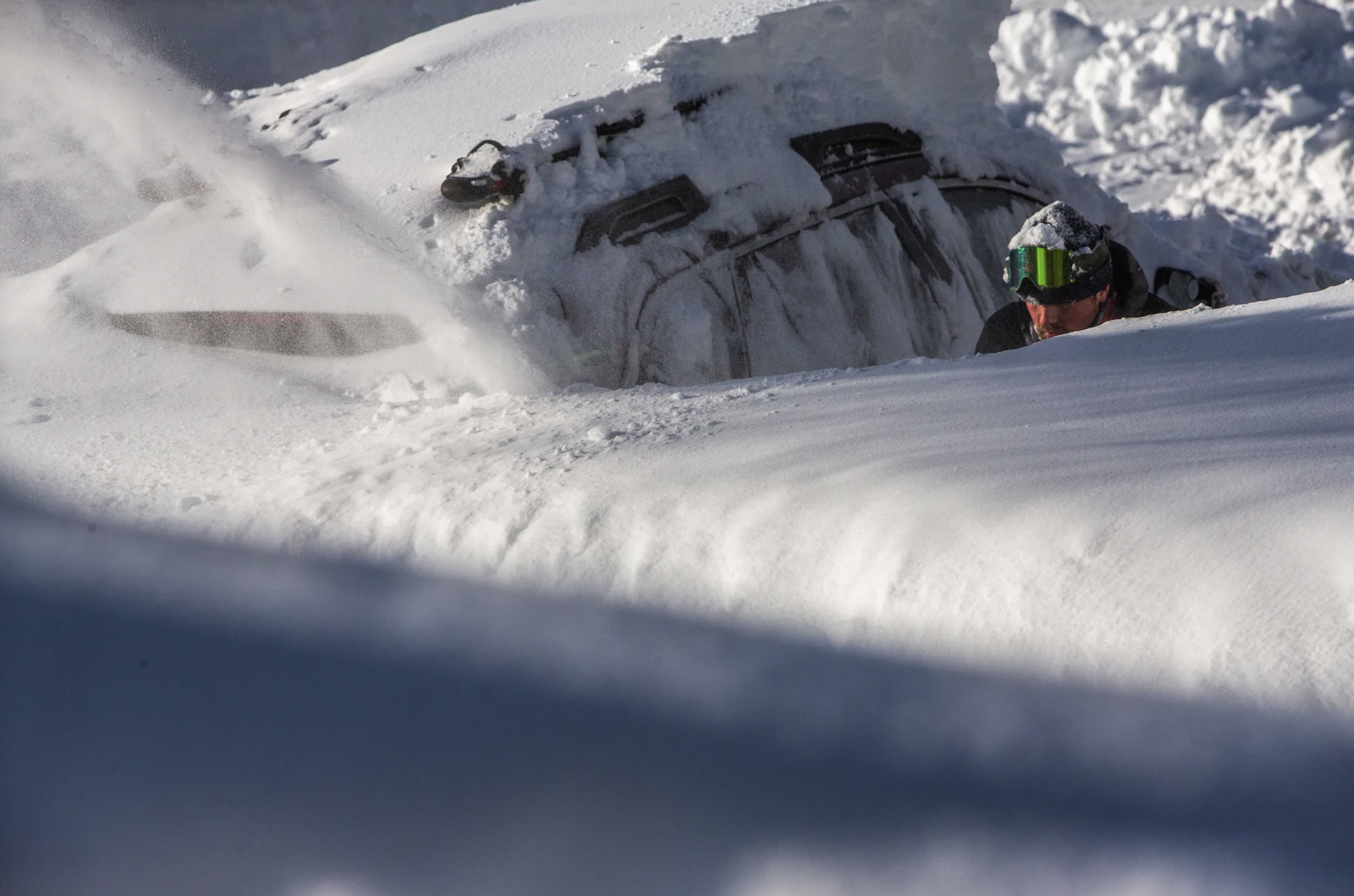
interlodge lockdown at Alta, Utah,
February 2021. Alta Ski Area.
Ten more inches (25cm) fell between midnight and 8:00 a.m., then a natural slide around 10 a.m. took out Highway 210 and the Bypass Road between Alta and the Bird, and everyone stayed locked down for another day and night. On Wednesday more avalanches buried 210 under 14 feet (4.2 meters) of snow and debris, and swept a snowplow and snowcat off the Seven Sisters area of the highway. Luckily, no one was hurt.
Sixty hours after it began, Alta’s longest interlodge ever (they’ve been doing it since at least 1975) ended early Thursday morning. The road was still closed, but lifts opened at 11:00 a.m. The 65 inches of fresh snow since the lockdown started was untouched, and no one from the outside world could get there for hours. It’s what locals call a Country Club day, for one of powder skiing’s most exclusive clubs. But it had come with a price, making it the perfect symbol of all the good and bad that happens when ski resorts get buried.
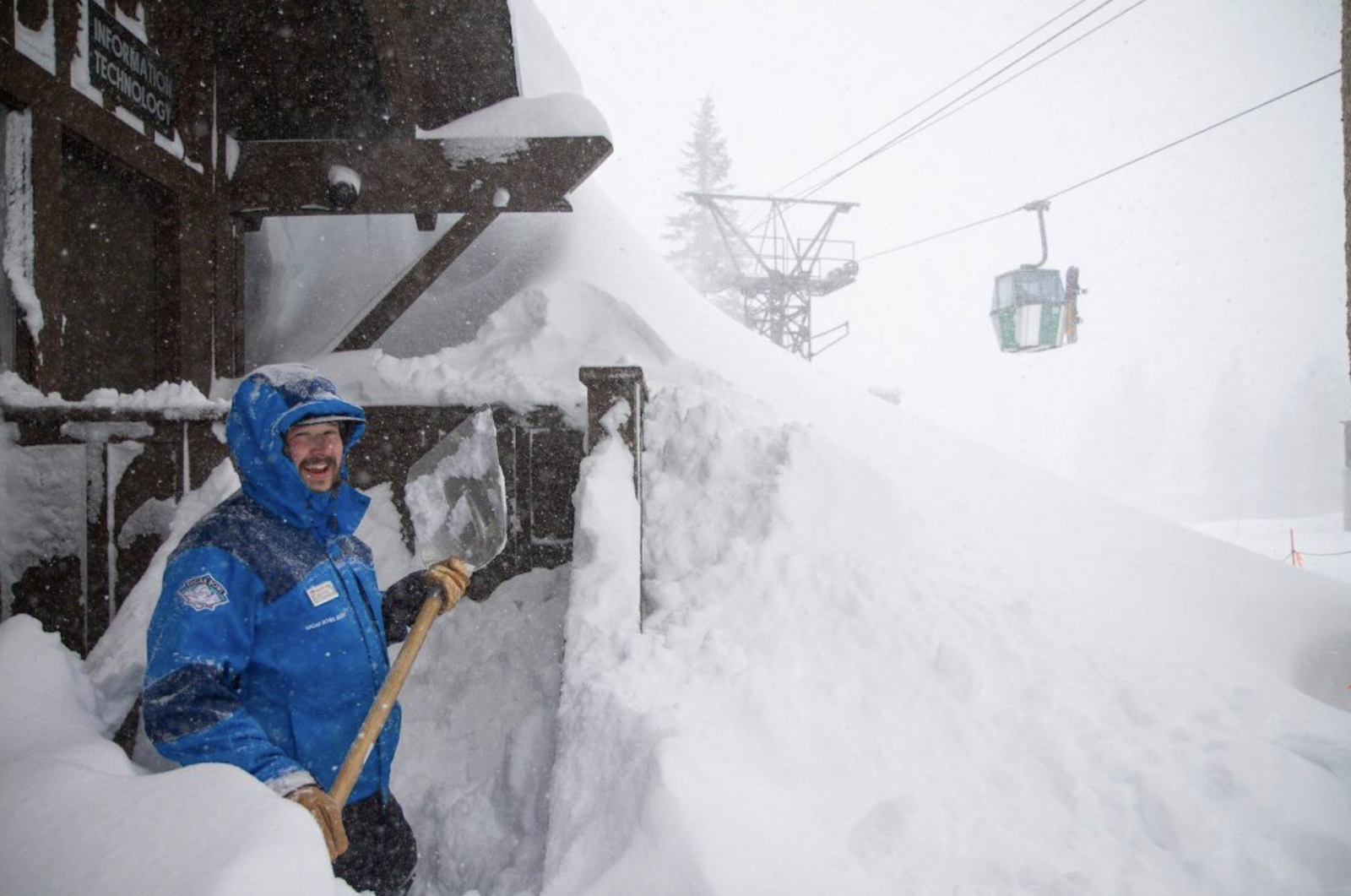
February 2019. The resort gets snow
blown over the top from the American
River Canyon. Sugar Bowl Resort.
Most ski areas have kept fairly consistent snowfall records since lift planning began. Snowstake readings are notoriously unreliable, but some records are certified by national weather services. For instance, in the United States, the National Oceanic and Atmospheric Administration (NOAA) says that the largest single-storm dump in the United States (and possibly in the world) occurred in 1959, in the Cascades of northern California. Mt. Shasta Ski Bowl recorded 189 inches (4.8m) over a seven-day period. Mount Shasta City, 4,000 feet (1,200m) lower, reported 33 inches (84cm) during the first day of the storm. Locals considered this normal.
It wasn’t normal for the ski area, because it was its first year of operation. The Ski Bowl had just opened a double chairlift on the southern flank of 14,179-foot Mount Shasta, with a base lodge at 7,850 feet. The storm rolled in on February 13 and over the week delivered nearly 16 feet—27 inches (70cm) per day.
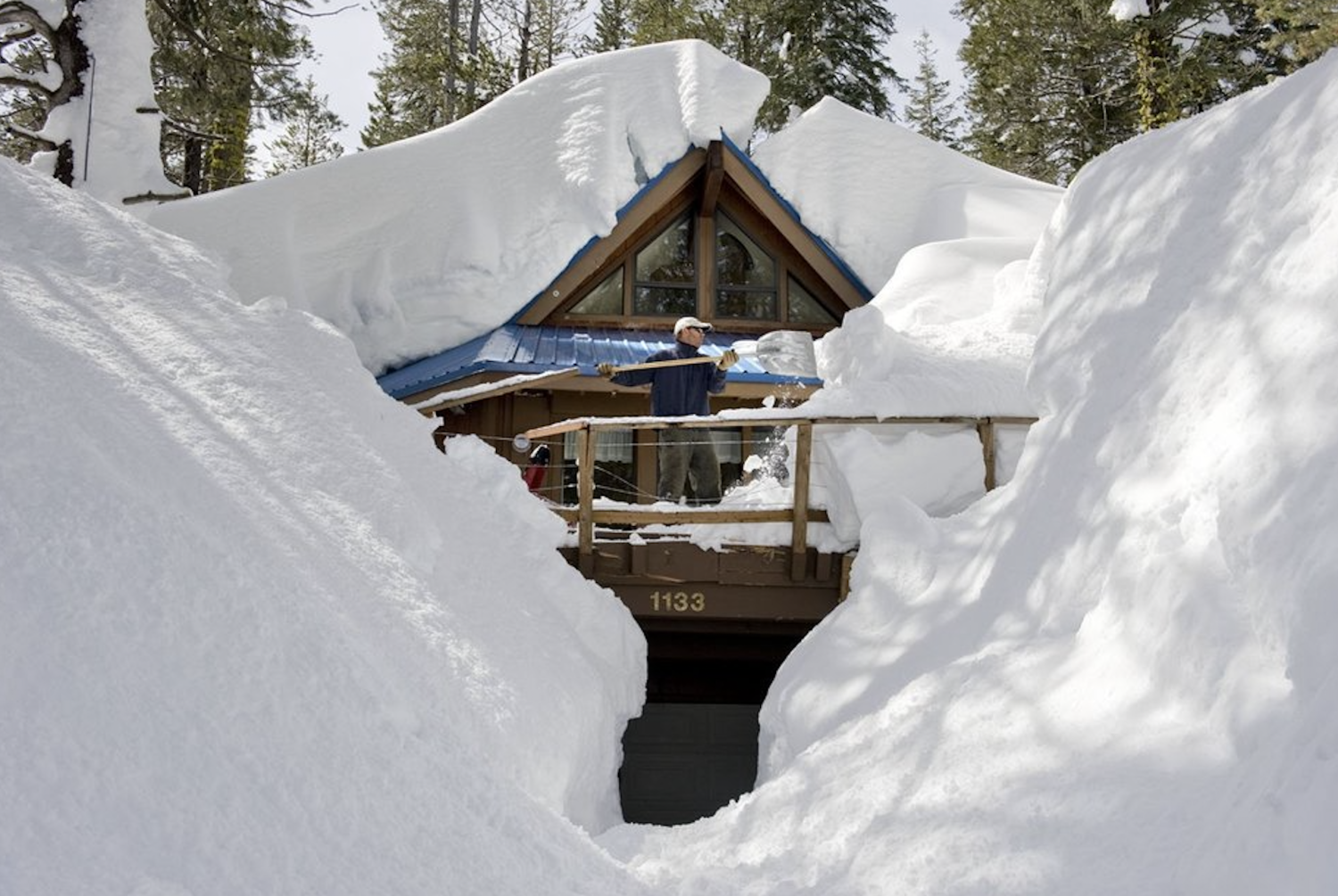
provides an upper-level entry. Sometimes
it's not high enough.
The skiing must have been insane, the kind of godsend that could mint a new ski area’s reputation. But heavy snow brought problems, too: In January 1978, an avalanche wiped out the original lift, closing the Ski Bowl for good. Mt. Shasta Ski Park, opened in 1985, was sited 2,300 feet (700m) lower.
1993 and the Storm of the Century
Big storms and big snow years often concentrate on one region, but occasionally a winter comes along that crushes the whole country. It happened in the spring of 1993, when the “Storm of the Century” capped what was already a record season.
That year, Oregon’s Mount Bachelor would tally its second snowiest year on record with over 600 inches (15m), compared to its healthy annual average of 462 (11.7m). The Sierras picked up nine feet (2.7m) between Christmas and New Year’s Day, effectively barricading a huge chunk of Heavenly Valley’s holiday business. At Mammoth, it snowed three feet on the last night of September. The area opened on October 8 and closed for skiing in mid-August—an amazing season for a non-glacier-based resort. The downside included numerous gas line ruptures, explosions and fires because people couldn’t keep their propane tanks and lines clear of the snow weight.
At Squaw Valley locals savored every minute. The resort stayed open all year for the first time ever, keeping the Bailey’s Beach lift running through the summer until opening day in the fall. “Everyone had a great old time skiing all the new runs in the trees when the passes and the upper mountain were closed,” said then-local Seth Masia. “National Chute, on Palisades where Warren Miller films a lot, normally has an 8- to 10-foot drop (3m) at the entrance. Even on a good winter. That year you just skied in.”
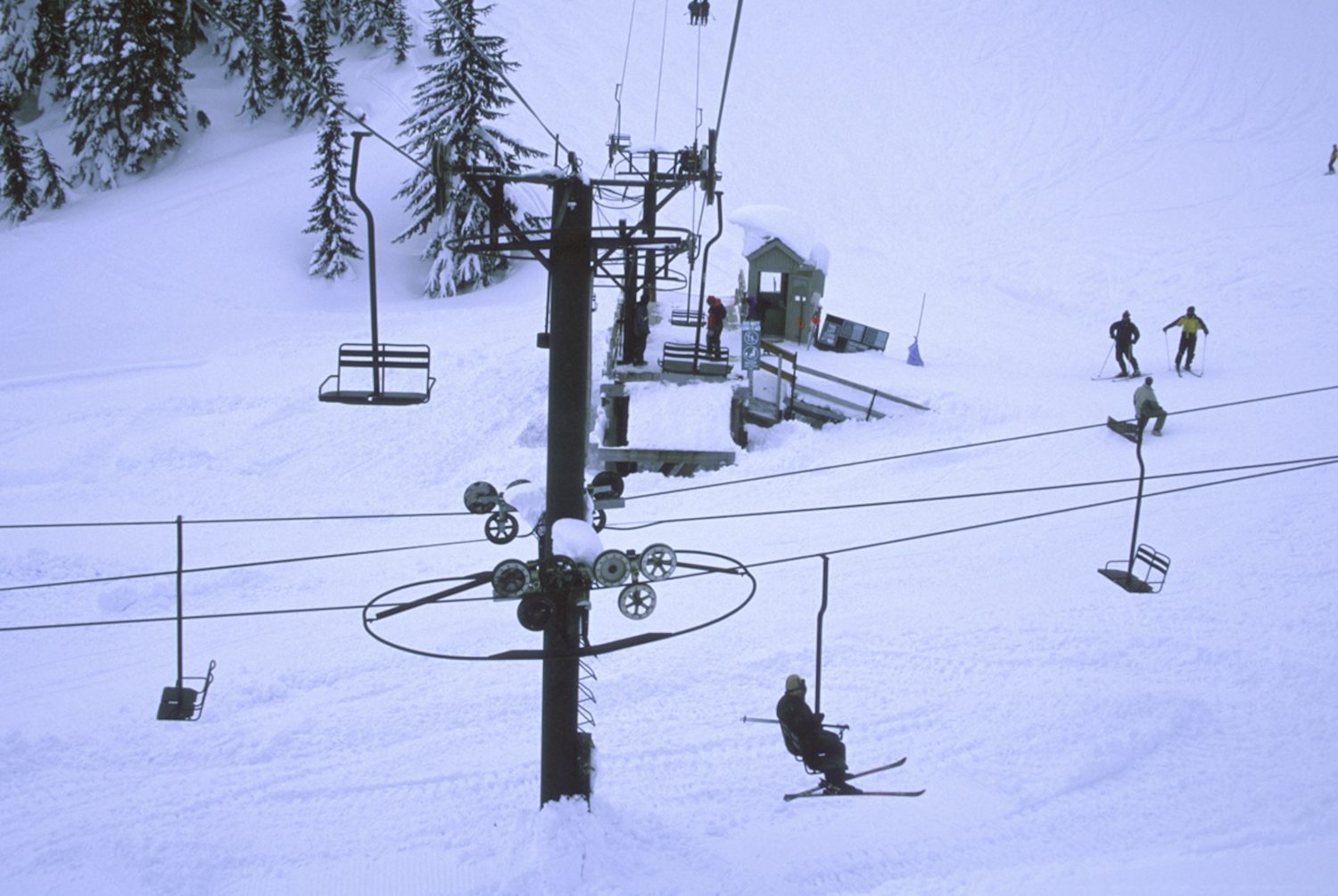
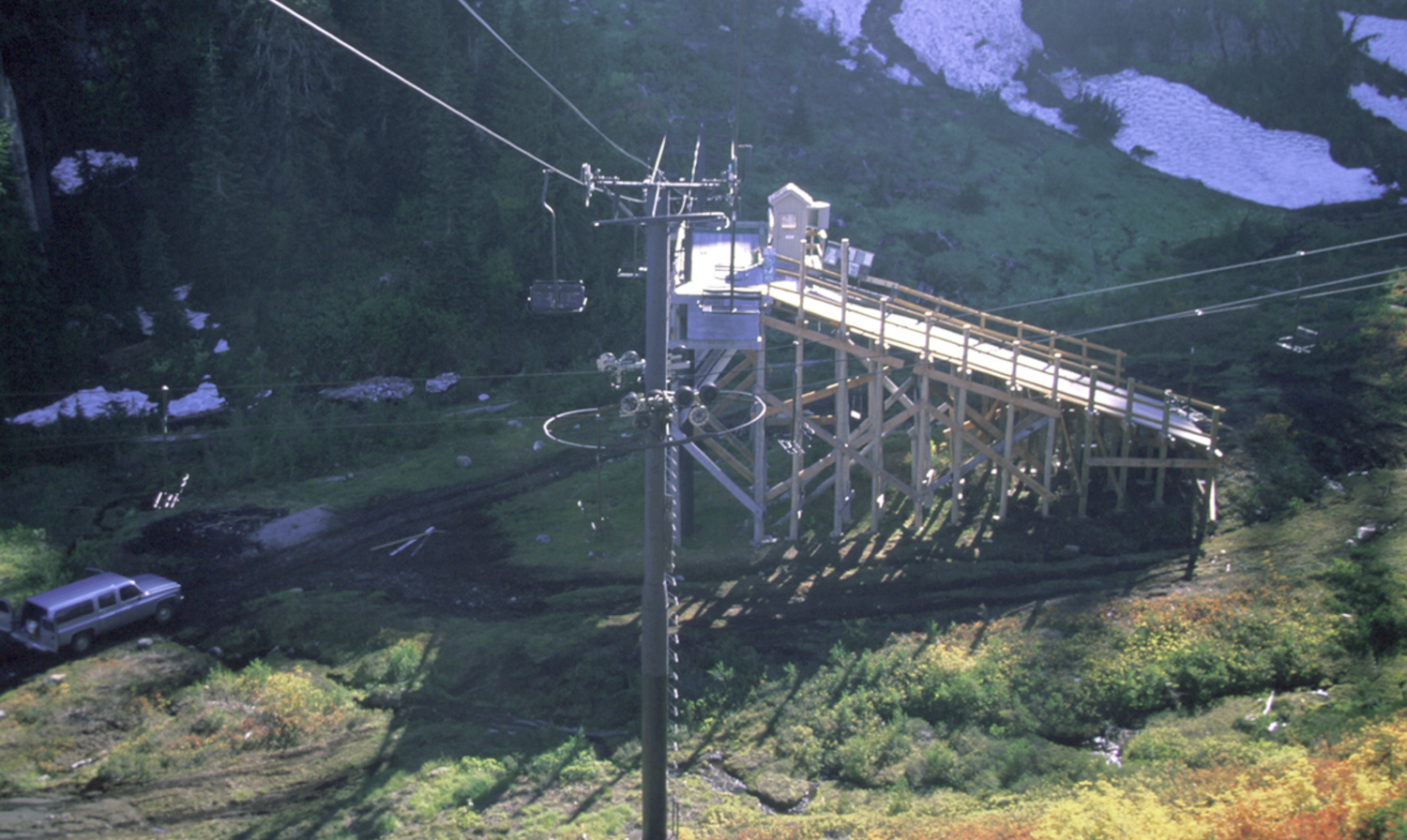
In Park City, Utah, the booming real estate market took a hit in January of ’93 because the weather was so consistently stormy no one wanted to go out and look at property. Crews had to dig out the Jupiter Bowl lift in several places before closing on April 15 with more snow than there’d been all season. And there was plenty: over 42½ feet, 7 feet more than the previous record.
One day in March Little Cottonwood Canyon had five avalanches, and Alta ended the season with a heroic 650.4 inches total compared to a remarkable average of 497 inches over its 82-year history.
In the Rockies, Jackson, Wyoming’s daunting Corbet’s Couloir got more traffic than ever before, due to what locals described as “the lessened fear factor” from the much shorter entry drop. And Big Sky, Montana, opened its steep Challenger Lift earlier than ever before, on Thanksgiving.
Colorado also got blitzed in early November when Aspen had more than double its average snowfall for the month and opened weeks earlier than it ever had. Winter Park got a quick 6½ feet (2m) that month and was able to open its new Parsenn Bowl on November 18 (with face shots up high) instead of in mid-January as anticipated. For the rest of ’93, Keystone got seven feet (2.1m) in February and promptly extended their closing date “indefinitely.” Statewide snow totals didn’t end up setting records, but most resorts reported an abundance of big powder days.
It wasn’t all glad tidings. In Durango, Colorado—a town well-accustomed to winter—the hardware stores ran out of snow shovels on January 14. More were flown in from Denver, but on the night of January 19, the roof of the empty Fort Lewis State College auditorium collapsed under the weight of snow that couldn’t be removed in time.
“Bad news for the college, good news for skiers,” Mike Smedley, media relations director at nearby Purgatory, told SKI Magazine after the blizzard. “As soon as that story hit the wire, our business shot up. People figured we must be buried and we were. There were days when we had 22 inches of new snow and less than a thousand skiers on the mountain.”
In Taos, New Mexico, General
Manager Mickey Blake told SKI he couldn’t remember the last time he’d seen the snowbanks as high along their roads, and his plow crews had run out of places to put it.
New England Buried
The ’92-’93 season started with a bang in New England when one of the most brutish nor’easters in history assaulted the Atlantic seaboard, handing Killington, Vermont, its earliest opening (Oct. 1) in 31 years. The weather turned mild in December, then rebounded in February when Vermont got anywhere from 6 to 11½ feet (2m to 3.5m) of snow and 98 percent of the state’s ski terrain was open for the first time in years.
Beginning March 11 and 12, an arctic high-pressure system formed over the Midwest at the same time an extra-tropical low-pressure front built over the Gulf of Mexico. The Storm of the Century was the cyclonic result of their collision over an enormous sweep of the country, from the Deep South to New England. It dumped up to 3½ feet (2.3m) on March 12 and 13. Okemo reported record base depths, and Killington went into April with the most skiing in its 35-year history.
“Sugarbush was incredible,” SKI contributor Dana Gatlin reported. “Doug Lewis [U.S. ski racer] told me he was born there and had never seen it like that.” The resort kept the steep and rugged Castle Rock area opened for two months on natural snow, which hadn’t happened since the ’70s. “And traffic in town slowed to a crawl because no one could see over the snowbanks at intersections.”
Writer David Goodman reported much the same thing from Stowe. “I’ve never seen conditions like it. The ‘Storm of the Century’ was a skier’s blizzard because it was on a Saturday evening. Stowe got two feet and only one lift was running on Sunday. There was hardly anyone on the mountain because no one wanted to venture out. We hiked to runs like Lookout Trail, that hadn’t been opened in a decade.”
Regional Records
The Pacific Northwest routinely ranks as one of the continent’s snowiest areas. One reason is because the region is visited by “extra-tropical cyclones,” with high winds and big snow that knock out power and bring highways, airports and trains to a standstill. During one three-day La Niña–inspired pounding in January 2012, parts of Oregon got 50 inches (1.3m) of snow.
Mount Baker averages 662 inches (16.8m), arguably the most in the Lower 48. In 1998-99 they got a positively freakish, world-record 1,140 total inches (29m) and were open for the entire year.
Whistler, British Columbia, gets a 448-inch (11.4m) annual average. Like Mount Baker, in 1998-99 the resort got walloped, scoring 644 inches (16.4m).
Powder magazine editor Leslie Anthony commuted there that winter from his home in Toronto. “Records are nice and all, but what’s it like to ski during a winter of endless snowfall? Pretty freakin’ great. Glorious even,” he recalls. “Like the hyenas gorging on a dead elephant that skiers resemble when it comes to powder, day after day after day of a foot or more of snow meant skiing bell to bell day after day after day—until you simply couldn’t do it anymore. And with the highway frequently closed, locals had a lot of it to themselves. After 22 years living here now, I have yet to see people take days off to rest their legs the way they did that winter.”
Whether you count it as part of the Pacific Northwest or as a region all its own, Alaska is home to one of America’s snowiest ski areas: Alyeska. The resort averages 669 inches (17m) at the summit, where it received a record 978 inches (24.8m) in 2011-12. Alaskan backcountry and heliski destination Thompson Pass reported an American record–setting 78 inches (2m) in 24 hours in 1963.
California has been racking up absurd amounts of snowfall since accounts have been kept, like the suffocating 32½ feet (9.9m) in a month in 1911 at Tamarack, near what’s now the Bear Valley ski area. In 1982 Donner Summit reported 87½ inches (2.2m) in a single two-day storm. Squaw Valley’s season record stands at 728 inches (18.5m) in 2016-17. Mammoth posted 668.5 (17m) inches for 2010-11.
Utah’s Wasatch Range is legendary for big storms moving in from the West Coast with crazy amounts of moisture and passing across a desert and then the Great Salt Lake before slamming into the mountains and releasing everything. Alta averages 551 inches (14m) but in 1994-95 posted 745.4 inches (19m).
In 1921, Silver Lake, Colorado, near St. Mary’s Glacier, got 75.8 inches (1.9m) in 24 hours out of a system that delivered another foot (30cm) over the next few hours.
New England’s snowfall king remains Jay Peak, claiming an average 355 inches (9m), and topping 513 inches (13m) in 2000-01. Stowe has been tracking snowfall on lift-served slopes since 1933, and claims an average 314 inches (8m). The record came in 2000-01 at 432 inches (11m). Locals say mountain operations are rarely stymied by storms, ’93 notwithstanding. However, as Town Manager Charles Safford notes, they have only one road in and, “We occasionally have a car that can’t make it up Harlow Hill, blocking traffic.” It doesn’t happen often or for long, but when it does it can mean that those already on the mountain have it all to themselves for a few hours.
Which sums up the divine dilemma of snow dumps: When the weather’s really bad for normal people, the skiing is delightful. If you can get to it. 
Jay Cowan’s last piece for Skiing History was the story of the X-Games (January-February 2021).
Table of Contents

Corporate Sponsors
ISHA deeply appreciates your generous support!
WORLD CHAMPIONSHIP ($3,000 AND UP)
Gorsuch
Polartec
Warren and Laurie Miller
CHAMPIONSHIP ($2,000)
Fairbank Group: Bromley, Cranmore, Jiminy Peak
Hickory & Tweed Ski Shop
Rossignol
Snowsports Merchandising Corp.
WORLD CUP ($1,000)
Aspen Skiing Company
Berkshire East Mountain Resort/Catamount Mountain Resort
Bogner
Boyne Resorts
Dale of Norway
Darn Tough Vermont
Dynastar | Lange | Look
Gordini USA Inc. | Kombi LTD
HEAD Wintersports
Intuition Sports, Inc.
Mammoth Mountain
Marker-Volkl USA
National Ski Areas Association
Outdoor Retailer
Ski Area Management
Ski Country Sports
Sport Obermeyer
Sports Specialists, Ltd.
Sun Valley Resort
Vintage Ski World
World Cup Supply
GOLD ($700)
Larson's Ski & Sport
Race Place | BEAST Tuning Tools
The Ski Company (Rochester, NY)
Thule
SILVER ($500)
Alta Ski Area
Boden Architecture PLLC
Dalbello Sports
Deer Valley
Ecosign Mountain Resort Planners
Fera International
Holiday Valley
Hotronic USA, Inc. | Wintersteiger
MasterFit Enterprises
McWhorter Driscoll, LLC
Metropolitan New York Ski Council
Mt. Bachelor
New Jersey Ski & Snowboard Council
Russell Mace Vacation Homes
Schoeller Textile USA
Scott Sports
Seirus Innovations
SeniorsSkiing.com
Ski Utah
Steamboar Ski & Resort Corporation
Swiss Academic Ski Club
Tecnica Group USA
Timberline
Trapp Family Lodge
Western Winter Sports Reps Association
World Pro Ski Tour
Yellowstone Club

